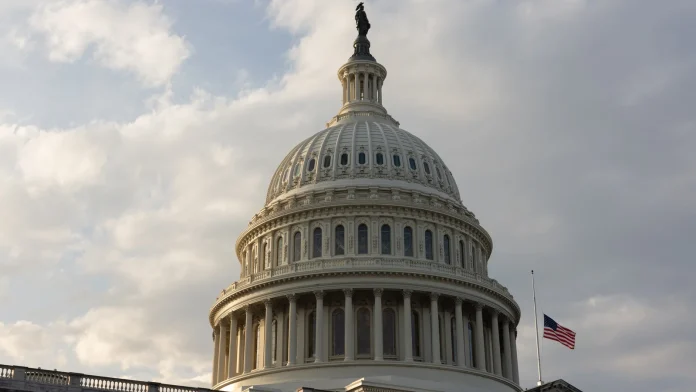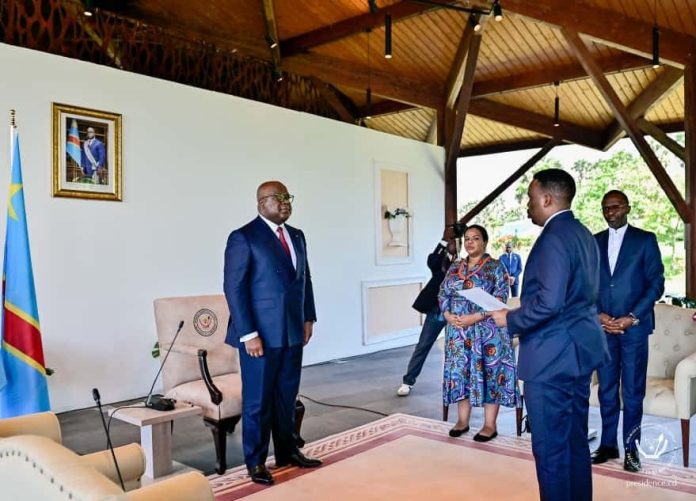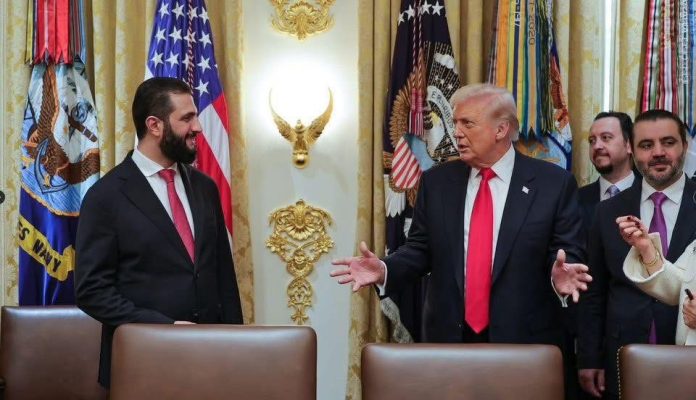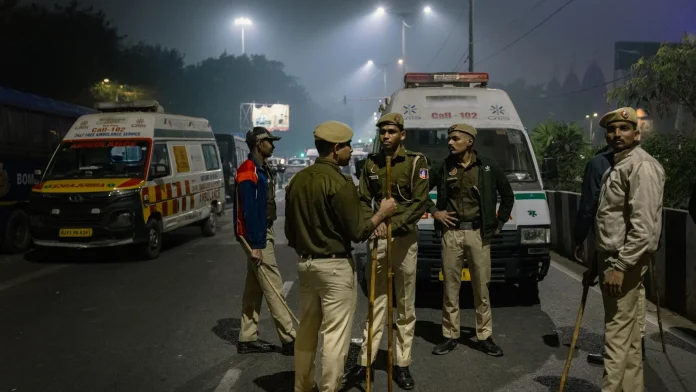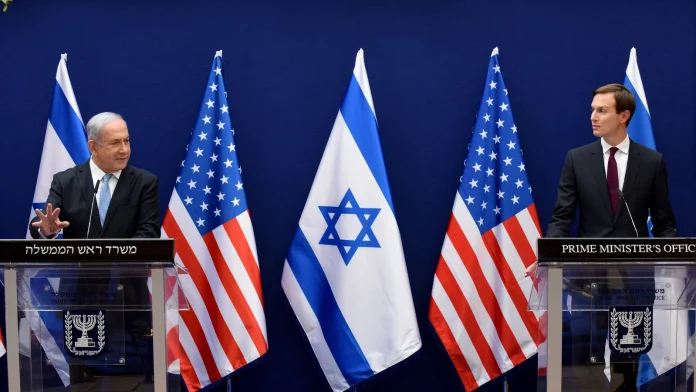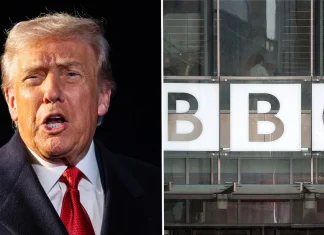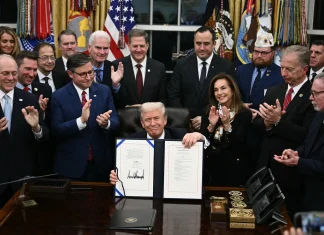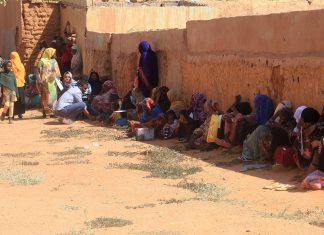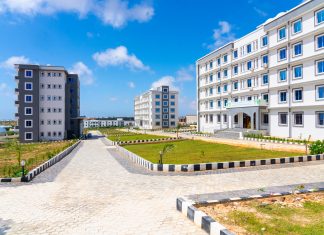Nov 11(Jowhar)-Ugu yaraan lix qof ayaa ku dhintay, halka tiro kale ay ku dhaawacmeen qarax xooggan oo ka dhacay bannaanka dhismaha maxkamad ku taalla magaalada Islamabad, sida ay xaqiijiyeen booliska Pakistan.
U.S. Senate Advances Legislation to End Federal Government Shutdown
The Long Pause: Capitol Haggling, Empty Desks and the Sound of a Country Waiting
There is a peculiar hush that settles over Washington when politics becomes logistics. It is audible in airport terminals where screens blink delays in cold blue, and in federal office buildings where rows of cubicles sit dark and dusted with a week’s worth of unanswered emails. For 40 days, that hush has been the soundtrack of a federal government operating on chips and trust, and yesterday it frayed into motion: the US Senate moved a procedural step to reopen the government, advancing a stopgap plan that could lull the shutdown into history — or prolong the uncertainty by days.
The vote was clinical — a 60‑40 margin, just enough to beat a filibuster — but the atmosphere on Capitol Hill was anything but. Lawmakers talked past one another in tense hallways while aides typed furiously. Outside, parents checked school lunch balances, farmers tallied SNAP-dependent customers, and travelers flipped calendars to see if Thanksgiving would remain a family promise. “It looks like we’re getting very close to the shutdown ending,” President Trump told reporters at the White House before the vote, a line that landed like a tentative promise.
A Fragile Truce on the Hill
The bill that crossed the Senate threshold is not a panacea. It is a patch: it would fund the government through January 30 and bundle three full-year appropriations bills into the deal. It would put a temporary lid on the White House’s effort to pare down the federal workforce and prohibit agencies from firing employees until that date. It would guarantee back pay for furloughed workers, including military members, Border Patrol agents, and air-traffic controllers.
Behind the scenes, negotiators such as Senators Maggie Hassan and Jeanne Shaheen of New Hampshire, and Maine’s independent Angus King, stitched the measure together with a handful of Democrats who broke ranks with their leadership. “For over a month, I’ve made clear that my priorities are to both reopen government and extend the ACA enhanced premium tax credits. This is our best path toward accomplishing both of these goals,” Senator Shaheen posted on X, framing the move as both pragmatic and principled.
Not everyone cheered. Senate Minority Leader Chuck Schumer voted against the plan, and Representative Ro Khanna — a progressive voice within the Democratic caucus — fired off a blunt rebuke on X: “Senator Schumer is no longer effective and should be replaced,” a stark reminder that intra‑party tensions can be as combustible as cross‑aisle gridlock.
What’s in the bill?
- Funding through January 30 to reopen federal operations.
- Three full-year appropriations bills included in the package.
- Prohibition on federal agency firings until January 30.
- Back pay guarantees for furloughed federal employees, military, air-traffic controllers and others.
- A promise of a December vote on extending Affordable Care Act premium subsidies, per the negotiating agreement.
On the Tarmac: Travel Snarls and Human Stories
Outside of committees and roll calls, the shutdown’s disruptions have a face. Airports became a weather map of American inconvenience: by yesterday evening more than 2,700 cancellations and nearly 10,000 delays were logged by FlightAware. New York area hubs — LaGuardia, Newark Liberty — Chicago O’Hare, and Atlanta’s Hartsfield‑Jackson felt the brunt.
At LaGuardia, where more than half of outbound flights were delayed on some days this week, weary travelers clustered near food carts and power outlets. “I booked my tickets in June,” said Mariela Santos, a mother of two, rubbing her coffee. “We were supposed to land in Orlando for a family Thanksgiving. Now I’m watching my kids’ school permission slips wondering if the flights will even run.”
Transport Secretary Sean Duffy warned of mounting air travel chaos if the closure persisted, and the White House’s economic adviser Kevin Hassett said on CBS’s “Face the Nation” that prolonged disruption could push US economic growth into negative territory for the fourth quarter, particularly if holiday travel falters. The stakes are not just sentimental: delayed flights cascade through supply chains, business travel and tourism revenue, and the cost in hours — and money — ripples outward.
Health Care at the Heart of the Fight
At the core of the negotiations lay the Affordable Care Act’s premium tax credits — subsidies that have swelled marketplace enrollment to about 24 million people since their expansion in 2021. Republicans, including President Trump, cast those payments as a windfall to insurers and have proposed replacing them with direct payments to individuals, an idea the President pushed on his Truth Social platform. “I stand ready to work with both Parties to solve this problem once the Government is open,” he wrote.
Democrats have called the subsidies a lifeline for millions who would otherwise face steep premium increases. Health analysts estimate the end of those pandemic‑era credits could more than double the average monthly premiums for 2026 plans for some shoppers — an outcome that would reverberate across middle‑class budgets just as households plan holiday travel and winter expenses.
“If the credits lapse, you will see a chaotic reordering of choices,” said a health policy analyst at a Washington think tank who asked not to be named. “People will either pay much more for the same plans, or they’ll drop coverage entirely. Neither outcome is good for continuity of care or long‑term cost control.”
Federal Workers: The Invisible Frontline
The human ledger is stark. Federal records show roughly 2.2 million civilians worked for the federal government at the start of this administration’s second term. Some estimates used by administration officials suggested that as many as 300,000 of those employees could be gone by year’s end due to attrition and downsizing plans.
For many furloughed workers, back pay is small consolation for the anxiety of missed mortgages and overdue medical bills. “Back pay is important,” said a federal employee at the National Park Service who requested anonymity. “But what I can’t get back is the lost momentum — repairs not made, kids’ activities skipped because I had to take odd jobs just to put food on the table.”
Union leaders hailed the bill’s temporary protections against forced separations. The ban on firings until January 30 appears aimed at halting an administration drive to shrink federal ranks — at least for the moment.
Where Do We Go From Here?
The Senate’s advance is only one box ticked. The House must sign off on any amended bill and send it to the President, who could sign or veto. That process could take several days; it could also be a crucible for more bargaining. Meanwhile, the ACA open enrollment window runs through January 15 — a sliver of time that gives lawmakers a breathing room to act on health credits for the coming year.
As Washington inches toward an answer, ordinary Americans are left to balance calendars, pocketbooks and patience. Will the vote relieve travelers’ anxieties in time for Thanksgiving? Will families who rely on SNAP — the program that helps more than 42 million people buy groceries — breathe easier now that the package reportedly restores its funding? Will long‑term policy disputes about the role of government in health and workforce policy find calmer waters?
These are not only questions for politicians. They are questions for a public learning the cost of governance by stalemate. When the corridors of power finally reopen, will anything have changed — in policy, in trust, or in the lived experience of the millions who felt the shutdown like a shuttered door on their everyday life?
For now, the country waits — in terminals and kitchens, in union halls and parks — listening for the sound of lights clicking back on. If the Senate’s step forward becomes law, the first order of business will be to turn repair into resilience. The next order, perhaps the harder one, will be to ask why it took 40 days for that repair to begin.
Safiirka Soomaaliya ee dalka Congo oo laga guddoomey Waraaqihiisa Aqoonsiga
Nov 11(Jowhar)-Safiirka JFS ee dalka Congo Mudane Ilyaas Cali Xasan, ayaa si rasmi ah uga guddoomay Waraaqihiisa Aqoonsiga Madaxweynaha DRC, Mudane Félix Antoine Tshisekedi Tshilombo, munaasabad ka dhacday Qasriga Qaranka ee Kinshasa.
Canada stripped of measles elimination status amid growing outbreak
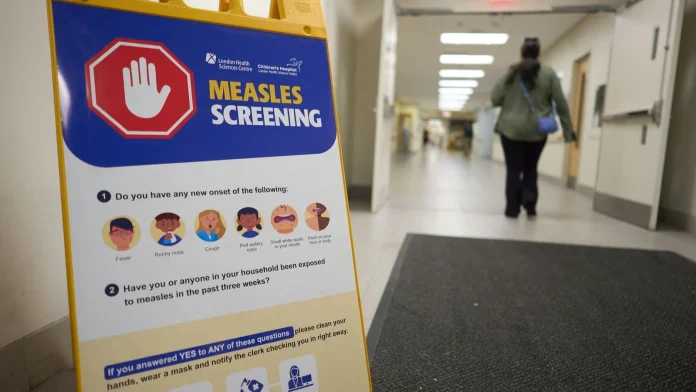
A Country’s Quiet Reversal: How Canada Lost Its Measles-Free Badge
On a damp spring morning in a Winnipeg neonatal ward, the hum of monitors is punctured by the quiet grief of parents who had thought such tragedies belonged to history books. Two newborns — their small lives measured in days — succumbed to a virus that was declared vanquished from Canadian soil nearly three decades ago. The disease: measles. The tally: 5,138 confirmed cases so far in 2025, a number that has jolted public health officials and ordinary Canadians alike.
Canada’s status as a measles-free nation — a badge earned in 1998 and nurtured by high childhood vaccination rates — has been stripped away, the Pan American Health Organization (PAHO) announced after determining that the same measles strain had been transmitted locally for more than a year. The technical definition is stark and simple: to be considered measles-free, a country must show no local transmission of the same strain for 12 continuous months, backed by trustworthy surveillance. Canada failed that test.
Where things went wrong
The chain of transmission that unravelled this status began quietly in October 2024 in eastern Canada. What was initially dismissed as an anomalous cluster smoldered into something far larger. Over months, the virus threaded its way through gaps in immunity — pockets of under-vaccinated communities, social networks where hesitancy meets isolation, and places where access to healthcare is inconsistent.
“We are watching a preventable disease exploit social fractures,” says Dr. Lila Kapoor, an infectious disease epidemiologist. “Measles isn’t choosy. It follows human patterns — gatherings, travel, family chains. And when immunity dips in any corner, the whole population becomes vulnerable.”
Provincial epicentres emerged. Ontario and Alberta shouldered the lion’s share of the cases. Alberta’s health office, speaking cautiously, reported a dramatic recent turn: cases are down more than 90% from their peak, and only two active cases have been reported in recent weeks. Vaccination uptake in Alberta has climbed, officials say — roughly 50% higher since March compared with the same period a year earlier — a signal that fear and outreach can move people toward protection.
The human stories behind the numbers
Numbers are an essential ledger of an outbreak, but they don’t capture the ragged edges of loss. “We thought we were safe because we live in Canada,” says Maya Thompson, a public health nurse who has spent long nights tracing contacts and consoling parents. “Then you deliver a baby whose mother refused vaccination while pregnant because of fear online, and suddenly you’re not talking theory anymore.”
Jacob, a father who asked that his full name not be used, remembers the frantic calls and the hospital corridor conversations. “My nephew was fine in November,” he says. “By January he had a rash and then a fever. It spread through a small community event. People were angry, confused—some blamed each other. It felt like the fabric holding our neighbourhood together was being pulled thread by thread.”
Within this tapestry are specific communities where lower vaccination rates contributed to sustained chains of transmission. Certain groups of Mennonite Christians, as public reporting has described, have sizeable populations who decline vaccination on religious grounds. Yet it’s important to remember nuance: Mennonite communities are diverse — many accept vaccines and actively engage with public health initiatives. The outbreak exposed the harm done when segments of any community remain disconnected from vaccination efforts.
Why measles is so unforgiving
Measles is one of the most contagious pathogens known to humans. It spreads through respiratory droplets when an infected person coughs, sneezes, or even breathes. A single infected person can infect 12 to 18 others in susceptible populations. The disease begins with fever and cold-like symptoms and progresses to a telltale rash, but complications can be devastating: pneumonia, brain inflammation, and death — particularly among infants and the immunocompromised.
“We sometimes forget that vaccines are less about individual convenience and more about a shared insurance policy,” says Dr. Marco Estevez, a pediatrician in Toronto. “When that policy unravels, the most vulnerable — newborns, elderly, those who cannot be vaccinated — pay the highest price.”
What officials are doing
In the wake of PAHO’s determination, provincial health ministers have been convening to discuss coordinated responses. Public officials are talking about more than mass vaccination campaigns; they’re talking about trust-building, community engagement, and nuanced strategies to reach populations that are skeptical or difficult to access.
Planned measures include:
- Targeted outreach and mobile clinics in under-vaccinated communities.
- Collaborations with trusted local leaders and religious institutions to share credible information.
- Enhanced surveillance and rapid response teams to isolate and contain new clusters.
- Public education campaigns to counter misinformation spread online.
“Punitive measures alone won’t close these gaps,” cautions Dr. Kapoor. “We need listening, humility, and persistent local partnerships.”
Beyond Canada: a global pattern
Canada’s loss of elimination status is not an isolated event. Across the Americas this year, countries have grappled with resurgent measles. The United States and Mexico reported thousands of cases and several deaths; the Americas region only reclaimed measles-free status in 2024 after a tough battle to stop an outbreak in Brazil. International mobility, declining vaccination rates among children in some wealthy countries, and the wildfire of misinformation online have created a tinderbox.
There are deadlines and inflection points elsewhere: U.S. health authorities, for example, have deadlines to demonstrate that ongoing cases are not linked to earlier outbreaks. The global health community watches these timelines because the loss of elimination in one country can ripple outward in an interconnected world.
What this moment asks of us
So where do we go from here? This outbreak is, at its heart, a question about civic solidarity: what responsibilities do we owe one another in a shared public health landscape? It’s also a test of public institutions — can they rebuild trust when skepticism runs high? Can public health messages be reframed not as mandates but as community protection?
“I don’t want fear to be the driver,” says Thompson, the nurse. “I want honest conversations. I want parents to come in and be heard. They’re more likely to vaccinate if they feel respected, not shamed.”
Ask yourself: when was the last time you checked your immunization records? When did you last speak with someone whose choices differ from yours and try to understand why? These small acts ripple outward, and in a season when a single unvaccinated gathering can fracture decades of progress, that ripple matters.
Closing thoughts
Measles won’t bow to rhetoric. It responds to immunity. Canada’s reversal is a sobering reminder that victories in public health are not permanent; they require constant stewardship. The scenes in hospital wards and community centers across Canada are both heartbreaking and instructive. They call us to rebuild bridges — between policymakers and communities, between science and lived experience, and, perhaps most importantly, between neighbors.
If there is a silver lining, it’s that behaviour can change quickly when people see the stakes. Alberta’s surge in vaccinations and the steep decline in active cases show what can happen when outreach is responsive and sustained. The question now is whether the rest of the country, and the world, will act with the same urgency before more lives are lost.
Syria oo ku biireysa isbaheysiga lagula dagaalamayo kooxda Daacish
Nov 11(Jowhar)-Maraykanka ayaa sheegay in Syria ay ku biirayso isbahaysiga caalamiga ah ee looga adkaanayo kooxda Daacish, isla markaana ay dib u bilaabayso xiriirka diblomaasiyadeed ee ay la leedahay Washington.
Vehicle explosion in Delhi kills at least eight people
When a car exploded by the Red Fort: smoke, questions, and a city that refuses to be silent
The street still smelled of diesel and spices the morning after — a pungent, unsettling mix that is so quintessentially Old Delhi it almost felt obscene. Charred metal sat like a skeleton where a sedan had been. Shutters of nearby shops were half-lowered. A ring of flowers, plastic water bottles and the haphazard scrawl of chalk marked where people had tried to make sense of what happened: at least eight dead, twenty wounded, a thin film of fear settling over lanes that have been loud with bargaining and rickshaw bells for centuries.
The blast struck just as dusk fell, in a congested pocket near the Red Fort — Lal Qila — a 17th-century Mughal citadel whose red sandstone walls are woven into the national imagination. Tourists and locals alike flock here year-round; every August 15 the prime minister stands on the fort’s ramparts to address the nation. That symbolism makes this more than an attack on infrastructure. It feels, for many, like an assault on narrative itself.
The immediate scene: chaos and grit
Witnesses described a small, slow-moving car stopping at a traffic signal, then a sudden, fierce rupture. Nearby vehicles were shredded. A frantic crowd gathered, some trying to pull people from wreckage, others calling for ambulances on phones that shook in their hands.
“I saw smoke and then people running. There was blood on the pavement,” said a shopkeeper who asked to be called Rahim. “We closed our shop after that; we are scared but we will reopen tomorrow — what else can we do?”
Emergency responders arrived quickly by Delhi standards: police, ambulances, and teams combing for clues while bystanders flicked through CCTV footage on their phones. Federal Home Minister Amit Shah, speaking to reporters, said authorities were examining “all angles.” Police forces have registered a case, and television channels reported the probe will proceed under the Unlawful Activities (Prevention) Act, or UAPA — India’s primary anti-terrorism statute.
What is the UAPA — and why does its invocation matter?
The UAPA, originally enacted in 1967 and strengthened through a series of amendments, is the legislation New Delhi often turns to in cases thought to involve terrorism or threats to the state’s integrity. A 2019 amendment broadened powers further, allowing the government to designate individuals as terrorists and tightening standards around bail and arrests.
To understand why invoking the UAPA is consequential, think of it as a legal hammer that can detain suspects for long periods and restrict traditional avenues of appeal. Human rights groups such as Amnesty International and Human Rights Watch have long warned that these broad powers risk curbing civil liberties and can be used in ways that chill dissent.
- UAPA enables long pre-trial detention and limits the ability to get bail in serious cases.
- The law allows for the designation of organizations — and, since 2019, even individuals — as “terrorists.”
- Critics argue it lowers procedural protections and increases executive discretion.
“From a legal standpoint, using UAPA signals the state is preparing for a sustained, high-stakes investigation,” said a counterterrorism analyst who asked not to be named. “It tends to bring more agencies into the fold — intelligence services, federal investigators — and shapes the public narrative from ‘accident’ to ‘attack’. That has real consequences for how communities are policed.”
Voices from the neighborhood
Old Delhi is a tapestry of vendors, pilgrims and longtime residents. The post-blast hush was pierced by small, personal testimonies — each one a thread of humanity that large headlines can erase.
“My nephew was going to his tuition class. He called and said there was smoke everywhere,” said Meera, a tea seller whose stall faces the lane where the car had halted. “We all help each other here. When something bad happens, everyone becomes family. Tonight the family is frightened.”
A young tourist from Spain, still clutching his camera, said he had been staying in a guesthouse a short walk away. “I came for the history, the colors,” he said. “Now the color is black for a moment. But I will stay. People here are warm.” His resolve was a small rebuke to the anxiety that would otherwise push visitors away.
Local police, pressed by cameras, were cautiously blunt. “We are piecing together CCTV and witness statements,” said an officer, who refused to be named pending the ongoing inquiry. “We will not speculate on motive until evidence is clear. For now, the priority is helping the injured and securing the area.”
Beyond the blast: politics, symbolism, and urban vulnerability
Why does an explosion near a place like the Red Fort register so loudly across the country and beyond? Partly because historic sites are soft targets in a hard world: full of visitors, with limited secure perimeters, and overflowing with symbolic value. An attack here reverberates beyond the immediate casualties — it hits at memory and national pride.
But the effects are practical, too. Several state governments reportedly moved to higher alert. Security at key facilities tightened. Tourism boards will now need to reassure travelers. Small businesses — the life-blood of Old Delhi — fear a drop in footfall that could last weeks or months.
And yet, there is another layer: the balance between security and civil liberties. When the state reaches for laws like UAPA, it promises tough action. It also raises questions: Do such measures prevent future violence, or do they alienate communities whose cooperation is essential? Are there safeguards to ensure investigations don’t become pretexts for wider crackdowns?
What to watch for next
Investigators will follow forensic leads: fragments from the scene, CCTV frames, mobile phone records and witness testimony. Officials say a conclusion will come “soon,” though history suggests complex cases often take time. The invocation of a stringent anti-terror law suggests authorities expect a protracted inquiry with potential national security implications.
For residents, the immediate concern is more pedestrian and human: funerals, hospital bills, and the mental aftershocks of trauma. For policymakers and civil society, the test is twofold — to bring the perpetrators to justice swiftly and transparently, and to do so in a way that preserves constitutional rights.
Closing: a city, a people, a question
As the sun set again on the red walls of Lal Qila, vendors re-lit tea stoves and a few curious tourists returned to the lanes. Life, stubborn and generous, edged forward. But the questions linger, heavy as the ash in the gutters: How do we protect open, historic spaces without turning them into fortresses? How do we confront violence without eroding the freedoms that define us?
What would you do if a place that holds your national memory was suddenly the site of tragedy — would you stay, rebuild, demand harsher laws, or call for restraint? In cities around the world, from narrow bazaars to broad boulevards, those are choices we all face now and will continue to face.
Syrian President Meets Trump, Asserts Al-Qaeda Links Are Historical
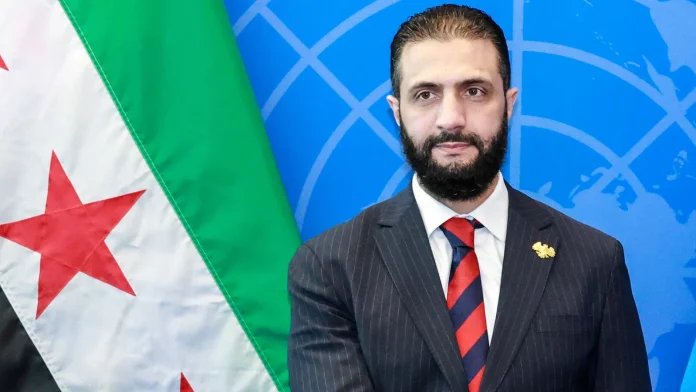
When a Rebel Walked Through the Side Door: Washington, Syria and the Strange New Chessboard
The white of the West Wing glowed under a cold November sky, but the arrival was anything but ceremonial. Instead of the familiar fanfare that greets state visits, a low-profile entrance, a few aides and a scattering of flags across the street marked the moment when Ahmed al-Sharaa — once a militant commander, once listed as a terrorist by Washington — stepped into the corridors of American power.
It felt like watching a hard-cut scene in a long-running drama: the rebel who led an insurgent offensive, the man whose name was linked for years to extremist networks, now sitting across from the President of the United States. For Syrians who have lived through the slow-motion ruin of their country, for Americans watching foreign policy pivot in real time, the image was disorienting and, for some, oddly hopeful.
From Enclave to Embassy Steps
Al-Sharaa’s path to the Oval Office was abrupt and improbable. A former militant commander who rose through insurgent ranks in the chaos after 2003, he was publicly designated by the U.S. as a terrorist for years. In a swift period of realignment, he renounced old group ties, consolidated power in Syria’s northwest and, within months of a decisive campaign that toppled Bashar al-Assad, was being greeted in Riyadh and then in Washington.
“People say he’s had a rough past. We’ve all had a rough past,” President Trump told reporters after the meeting — a terse summation that underscored the administration’s pragmatic tone. “I get along with him,” he added, signaling that the United States is willing to fold Syria, under al-Sharaa’s leadership, back into a regional safety architecture.
Security First — and Fast
The substance of the talks was as stark as the optics. On the table: a proposed security pact with Israel, arrangements for a possible U.S. presence at a Damascus airbase, and Syria’s tentative return to a U.S.-led coalition against Islamic State. Washington has indicated it wants Syria to help secure its own borders and to take a formal role against jihadist resurgence — a reversal of a decade-long posture that treated Damascus as a pariah.
“The calculus is clear: stability in Syria reduces the pressure on its neighbors and on Europe,” said Dr. Miriam Alvi, a security analyst who has studied Syrian insurgent networks for two decades. “But stability without reconciliation is brittle. The risk of renewed sectarian fractures is very real.”
Assassination Plots, Arrests and the Shadow of ISIS
Just hours before al-Sharaa’s meeting, Syrian officials disclosed that two Islamic State plots to assassinate the president had been foiled. Those warnings were followed by a nationwide security sweep: more than 70 arrests, government media reported, as Damascus moved to demonstrate that it could still maintain internal order.
“We’ve been living under the threat for years,” said Leila Haddad, a teacher in Idlib who fled her home five years ago and now runs an informal classroom in a tent camp. “When some of these leaders meet in plush rooms, we wonder who will protect the baker, the children, the elderly when bombs fall again. Words are not enough.”
Sanctions, Rebuilding, and the Money That Might Save — or Control — a Country
Perhaps the thorniest issue is money. The World Bank has warned that rebuilding Syria could cost in excess of $200 billion — a staggering figure for a nation with collapsed infrastructure, millions displaced and businesses shattered.
U.S. sanctions remain a key lever. After meetings in Riyadh and Washington, the Trump administration signaled its intention to lift many of the penalties, and the United Nations and Washington removed several terror-related designations in recent weeks. But the strongest of those measures — the Caesar Syria Civilian Protection Act of 2019 — cannot be undone by executive fiat. Repeal requires congressional action, and Capitol Hill is split.
“There are powerful voices saying: don’t reward a regime that has failed its people,” noted Representative James Carter (R-Ohio), who has long been skeptical of rapid normalization. “Yet there are equally strong arguments for engagement if it secures a lasting defeat of extremist groups and opens the door for reconstruction that benefits Syrians, not warlords.”
Human Cost and Social Fault Lines
Beyond the geopolitics, the human ledger remains devastating. Fourteen years of conflict have left neighborhoods in ruins, families scattered and civic institutions hollowed out. International agencies estimate that more than 6 million Syrians remain internally displaced, while countries around the world host more than 5 million refugees who fled the violence.
And new violence continues to simmer. Since the fall of Assad, some reports suggest sectarian exchanges have killed thousands more, deepening mistrust between communities that now must learn to live under a new authority.
“We are tired of being bargaining chips,” said Ibrahim Qasim, a displaced shopkeeper now living in a camp outside Damascus. “If there is to be peace, it must be a peace for all Syrians. Otherwise, this new order will be another cycle of another man’s rule.”
What This Means for the Region — and for Us
Al-Sharaa’s visit is more than a single diplomatic headline. It signals a wider reorientation in the Middle East: a retreat of Iranian and Russian influence in some corridors, a patchwork rapprochement with Gulf states and Turkey in others, and a U.S. administration willing to bet on former foes to check newer threats.
“Sharaa’s arrival in Washington is emblematic of a dramatic shift,” said Firas Maksad, a Middle East specialist at the Eurasia Group. “Syria has pivoted away from one axis to another in short order. The risk is that the social compact inside Syria does not keep pace with the diplomatic deals made in foreign capitals.”
Questions That Won’t Go Away
As readers, as global citizens, we should ask: What will lifting sanctions truly buy for ordinary Syrians? Can a country heal when political settlements leave grievances unaddressed? And how will Western governments ensure that reconstruction money doesn’t entrench new patronage networks?
There are no easy answers. The visit laid out a possible blueprint for Syria’s return to international life, but the work of peace — rebuilding institutions, protecting minorities, prosecuting crimes and fostering economic opportunity — will be done in dusty towns and over chipped tea cups, not in the White House.
For now, Syrians like Leila, Ibrahim and the millions living in limbo will watch closely. They will look for concrete investments in hospitals and schools, for real protection against militant reprisals, and for recognition that a durable peace requires more than a change of flags at a foreign plaza.
And you, reading now from across oceans and time zones, might ask: what obligations do we have to a nation reshaped by war, and how should the international community balance the desire for stability with the demand for justice?
That balancing act will define Syria’s next chapter — and perhaps the world’s sense of what it means to rebuild not just buildings, but trust.
Kushner, Netanyahu Discuss Plans for Second Phase of Gaza Truce
The Quiet Between Storms: Gaza’s Fragile Month of Ceasefire
The streets of Gaza are quieter than they were a month ago, but the silence is brittle—a thin film over a landscape that still smolders. In the markets, vendors tentatively reopen stalls; in refugee camps, children play beneath skeletal trees. Yet the air is laced with unease. Every distant thud, every drone shadow, revives the memory of the violence that shattered lives last October.
Washington has quietly upped its diplomacy in recent days, dispatching Jared Kushner to Jerusalem to coax the fragile truce into a more durable peace. Kushner — described by some Israeli officials in frank terms as a key broker of the ceasefire — met Israeli Prime Minister Benjamin Netanyahu to press forward on what they call “phase two.” The meeting was not merely diplomatic choreography; it was an attempt to translate tentative goodwill into enforceable terms.
What “Phase Two” Means — And Why It’s So Dangerous to Assume
Phase two, as sketched by Israeli spokespeople, reads like a checklist that could reorder Gaza’s future: disarm Hamas, demilitarize the Strip, and install an international stabilization force. “Phase two also includes the establishment of the international stabilisation force,” Israeli government spokeswoman Shosh Bedrosian told journalists, noting that the fine print was still under negotiation.
But the details are where ceasefires go to die. Who disarms? Who polices? Who occupies — even temporarily — and under what rules of engagement? Bedrosian was blunt: “There will be no Turkish boots on the ground,” she said, rejecting one proposed participant. At the same time, other regional powers have parsed the offer in their own terms.
- Egypt, Qatar and Turkey have been placed on potential rosters for an international stabilisation force.
- The UAE warned it would likely abstain unless the mission came with a clear operational framework, according to Emirati presidential adviser Anwar Gargash.
- Turkey, eager to play a role, finds itself frozen out by Israeli resistance and a diplomatic chill that has only deepened since Ankara issued arrest warrants charging Israeli leaders with grave crimes.
Those fault lines are not bureaucratic trivia; they are the marrow of power politics. A stabilization force without regional legitimacy is a force without an operating permit. And a plan that insists on the disarmament of Hamas — an insistence the group calls a “red line” — risks collapsing before it begins.
Exchanges, Returns, and a Thousand Small Griefs
Small acts of closure have punctuated the month: the return of 20 living hostages by Hamas and the delivery of the remains of 24 captives, including 21 Israelis. In turn, Israel freed nearly 2,000 prisoners and handed back 315 bodies of Palestinian captives. These exchanges are human transactions at the rawest level — proof that diplomacy can, in fits and starts, bring people home.
“Time has stood still,” said Ayelet Goldin when the remains of her brother, Lieutenant Hadar Goldin — missing since 2014 — were repatriated. “How do you process fighting for a brother who’s gone?” Her voice, strained and small, echoed something larger: memory can be returned, but life cannot.
Yet the numbers on the ground reveal why reconciliation feels so distant. Gaza’s health ministry reported that at least 242 Palestinians had been killed by Israeli forces since the truce began — a figure the Israeli military disputes and that independent verification organizations say is difficult because of media restrictions and access limits. Meanwhile, Israel says it has targeted Hezbollah in Lebanon, killing 15 members of the group since the start of November, and continues strikes despite last November’s cessation of broader hostilities.
Lives in Limbo: Voices from Al-Bureij and Beyond
“We still do not feel safe,” Salma Abu Shawish, 40, who lives in Al-Bureij refugee camp, told me over the phone. The camp, a cluster of concrete and corrugated roofs, is alive with the restless industry of survival: women mending clothes, men haggling for bread, children tracing patterns in the dust.
“Shooting continues,” she said. “We try to protect our children from psychological trauma and to help them forget the war and its effects. Life in Gaza is hard. We still lack food, and many families remain homeless. We only wish this nightmare would stop and never return.” Her words are ordinary and devastating: a wishlist for peace that reads more like a prayer.
Humanitarian workers on the ground describe clinics barely functioning, a patchwork of food distributions, and a generation of children walking through rubble carrying backpacks too large for their shoulders. “The psycho-social toll is enormous,” said Dr. Leila Haddad, a psychologist working with displaced families. “Even when the shooting stops, trauma persists. We are treating nightmares and bedwetting in children whose world has been reduced to walls and the sky.”
The Regional Chessboard and the Question of Enforcement
Netanyahu, speaking to parliament, promised to wield the agreements with “an iron fist.” “Whoever seeks to harm us, we harm them,” he said. Such rhetoric reassures some constituencies at home but inflames others abroad. The Israeli calculus is straightforward: prevent future attacks by rendering adversaries militarily impotent. The moral, legal and practical hurdles of that approach are anything but simple.
For Washington, the immediate task is stabilisation: to make sure the tenuous silence does not unravel into a new round of violence. Jared Kushner’s role — a figure already familiar to the region for his earlier initiatives — is to stitch together the competing interests. But the U.S. envoy faces the same problem every mediator confronts: can an international guarantor be both credible and accepted?
“Trust cannot be negotiated on a table alone,” said Michael Levin, a Middle East analyst. “It is built in lanes — access to aid, reopening crossings, accountability mechanisms. Without those, any ceasefire is simply a pause before the next conflict.”
What Comes Next — And How You Can Watch It Unfold
The coming weeks will reveal whether phase two will be a blueprint for stability or a battleground of competing ambitions. Will an international force be fielded with a mandate strong enough to deter violence? Will Hamas agree to measures that it says amount to surrender? Will regional actors be satisfied that their interests are safeguarded?
These are not merely strategic questions. They are human ones. They ask what justice looks like for those who lost loved ones, what security means for children whose schools were rubble, and what dignity means to people living in tents when winter approaches.
If you care to follow this story, do not watch only the headlines. Tune into the small details: aid convoys, the reopening of hospitals, the distribution of food, and the slow, stubborn work of rebuilding trust. Ask yourself what a durable peace would demand from every player — locally, regionally, and internationally.
For the people of Gaza and for Israelis who have felt the knife-edge of fear, peace is not an abstraction. It is a row of returned bodies, a child’s belly filled, a teacher going back to a classroom. For now, the ceasefire breathes, tentative and wary. The rest — the hard architecture of peace — remains to be built.
New Delhi blast kills at least eight people
Smoke and Silence in Old Delhi: A Night the Red Fort Felt the Heat
When the sirens began, the city seemed to hold its breath. By the time people poured out of cramped shops and narrow lanes, flames were licking the sides of vehicles, black smoke blotted out the lamps, and a familiar skyline — the domes and ramparts of the Red Fort — sat ash-grey against the night.
At least eight people were killed and eleven injured after an explosion tore through a busy street near the Red Fort in Old Delhi, police said. The blast, which police described as coming from a car, left charred metal and scorched pavement in an area that is usually defined by the chatter of bargaining, the clatter of rickshaw wheels, and the steady steam of chai kettles.
First on the scene: chaos and courage
“We heard a bang—like thunder right in front of the station—and then everything went dark for a moment,” said one shopkeeper, wiping soot from his hands. “People started screaming. I tried to pull two children out from under a cart. There was smoke everywhere. The smell—like burning rubber and plastic—stayed with me for hours.”
Local TV footage showed flames spitting from more than one vehicle, and Delhi’s deputy fire chief later confirmed that at least six vehicles and three autorickshaws had caught fire before firefighters extinguished the blaze. Police moved quickly to cordon off the scene and disperse crowds; witnesses described an urgent attempt to keep curious onlookers—and potential secondary harm—away from the smoldering wreckage.
“We are treating this as a serious incident,” a police spokesperson said. “The cause is not yet known. Forensic teams and bomb disposal units are on site and investigating.”
Where history and daily life collide
The Red Fort—Lal Qila in Hindi—a 17th-century Mughal-era citadel and UNESCO World Heritage site, towers over the lanes of Old Delhi. It is a place where tourists rub shoulders with pilgrims, morning prayers spill into market noise, and centuries-old traditions meet the ceaseless churn of modern urban life.
That collision of past and present is what makes the blast feel so jarring. Here, a history lesson in red sandstone sits just above a metro station and a maze of bazaars that teem with people every day. The blast struck close to one of those busy arteries, a spot where autorickshaws queue and street vendors sell kebabs and jalebis to commuters tiring after a shift.
“This area is never empty,” said a commuter who witnessed the aftermath. “There are always people moving. That’s why this hits so hard—it’s the sheer ordinariness of the place that makes you feel vulnerable.”
Numbers, alerts, and the wider city
The immediate casualty figures—eight dead, eleven injured—represent lives interrupted and families rearranged in an instant. For a city the size of Delhi, where the National Capital Territory holds around 20 million residents in the broader metropolitan area, incidents like this ripple quickly through public consciousness.
Authorities declared a high alert in both New Delhi and Mumbai following the blast, according to media reports. Public transport officials said they were monitoring stations and adjusting security protocols; police stepped up patrols near other historic sites and crowded public spaces. For a population used to a constant background hum—traffic, construction, politics—this elevated restraint felt like a new, uneasy chord.
“We have to balance vigilance with normal life,” said a security analyst. “Memorial sites, markets, and transit hubs are inherently vulnerable because they concentrate people. What authorities do now matters, in practical terms of response, and symbolically, in maintaining civic calm.”
Voices from the street
A tea seller who had been serving masala chai near the metro for decades pressed a hand to her chest and said, “I have seen festivals, election rallies, even power outages—but I’ve never seen anything like this here. People still need to come out and work. They will be afraid for a day, but life will come back.”
A tourist from abroad, shaken and wrapped in a blanket provided by volunteers, added, “You come to see history, not to worry about safety. But you can’t help thinking: how close was this to where we were just hours ago?”
These voices—practical, scared, resilient—remind us that an incident like this isn’t only a line in a newspaper. It lodges itself in the routines and memories of a neighborhood. Children who play in the alleyways, vendors who count rupees every night, the elderly who make their way to the fort for a walk—each is a small story intersecting with a larger public event.
Context and consequence
Explosions in city centers prompt immediate security responses and longer conversations about public safety, intelligence-sharing, and urban resilience. Cities worldwide have wrestled with how to protect landmarks without turning them into fortress zones that alienate the people they belong to.
Experts note that soft targets—markets, transit stations, cultural sites—are difficult to secure comprehensively because they require openness. “The challenge,” a civic planner observed, “is to make spaces less attractive for violence without stripping them of their public life. It’s not only about barriers and CCTV; it’s about community vigilance and rapid, well-coordinated emergency response.”
What happens next—whether the cause is a mechanical failure, an accident, or something more sinister—will matter deeply for policymakers and for residents plotting a return to routine. In the meantime, forensic teams will comb for answers, and the city will count the cost in grief and in the recalibration of its public spaces.
What this moment asks of us
In the immediate hours after the blast, volunteers set up hot tea and bottled water for police and victims, while local NGOs coordinated ambulances and temporary shelters. The Red Fort’s stones, which have seen centuries of empire and upheaval, now witnessed a modern city’s emergency care in action: neighbors helping neighbors, strangers becoming first responders.
How do we live with the knowledge that public life can be abruptly punctured? How do we ensure that a moment of fear does not calcify into permanent suspicion? These are the questions Delhi—and cities everywhere—continues to wrestle with.
For now, the street will be swept, the smoke will clear, and news cycles will move on to the next headline. But for families who lost a loved one and for the vendors who counted a quieter day’s earnings, the aftermath will be very personal and very tangible.
As investigators work to find answers, ask yourself: what does it mean to safeguard a city’s soul—the markets, the mosques, the forts—without closing it off? And how do communities reclaim the rhythms of daily life after the shock has passed?
The Red Fort has stood through sieges and celebrations. Tonight, its silhouette over the old city is a reminder that history keeps moving, and so must the people who live within it—careful, resilient, and quietly determined to rebuild the ordinary beauty of their days.
Trump Pardons Giuliani and Allies Accused of Subversion
A sweeping pardon, a nation holding its breath
When the proclamation landed on a Friday and unfurled across screens, it felt less like a legal document and more like a weather front moving across a polarized landscape.
“This will end a grave national injustice and continue the process of national reconciliation,” the document declared — language meant to soothe, and for many, to inflame. The proclamation, posted publicly and amplified by a Justice Department official on social media, granted federal pardons to dozens of people tied to the scheme to present alternative slates of 2020 electors. The list, the document said, included at least 77 names.
For readers around the world who have watched American democracy as a kind of living experiment, the scene was unmistakable: a president exercising one of the oldest and most absolute powers in the constitutional toolbox at a moment when the country’s political wounds are raw and widely visible.
What happened — in plain terms
Federal prosecutors had investigated a plot in which supporters of the former president assembled competing elector certificates in several states after the 2020 election. Those efforts were part of a broader attempt to challenge the certified results that ultimately showed Joseph R. Biden Jr. the winner in 2020. The Justice Department’s inquiry looked into whether the submission of alternative electors and related actions crossed the line into criminal conduct.
The recently released proclamation pardons many of the participants. Presidential pardons erase federal criminal liability, but they do not touch state prosecutions. That distinction matters here: states including Arizona, Georgia, Wisconsin and Nevada launched their own probes — and some filed charges — while in Michigan certain criminal cases were dismissed in September.
Who is on the list
Among the names singled out were high-profile figures from the former administration and its allied legal and political teams: top advisers, lawyers and operatives whose public roles in 2020 were widely reported. The proclamation and accompanying materials named Mark Meadows, Jeffrey Clark, Christina Bobb, John Eastman, Boris Epshteyn and Kenneth Chesebro, among others. The document made clear the list could include additional individuals not explicitly named in the public posting.
Voices from the ground: Americans respond
In small towns and big cities alike, reaction was immediate and polarized. In Maricopa County, Arizona, where election workers spent months defending the integrity of local ballots, one long-time elections clerk told me, “We counted ballots like we always do. We did the work; our names are on the paperwork. A pardon doesn’t change that.”
Across town, a volunteer for a local conservative nonprofit said, “People were criminalized for trying to protect the Republic. This proclamation is a reset — a chance to stop using the justice system as a political weapon.”
Legal scholars, too, weighed in with sharp, measured critiques. “Pardons are legally within the president’s power,” said Dr. Maria Alvarez, a constitutional law professor. “But their use here raises important normative questions about accountability, deterrence and the message we send about political malpractice.”
“Think about it through the lens of civic trust,” added James Reynolds, a veteran federal prosecutor who spent two decades at the bench. “When pardons follow immediately on the heels of contested political behavior, they can erode confidence in impartial enforcement.”
What the law actually does — and doesn’t — do
Two simple facts are worth stressing.
- Presidential pardons apply only to federal crimes. They cannot erase state charges or civil liability.
- A pardon forgives legal culpability but does not formally declare the actions lawful; it removes penalties and a legal bar to prosecution at the federal level.
That means individuals pardoned today might still face state-level scrutiny. In Georgia, for instance, a sprawling state investigation has led to indictments in recent years connected to the 2020 post-election period. Those proceedings will continue to test the boundaries between state and federal authority.
Why numbers matter
The document named at least 77 people, but the number itself feels less decisive than the signal it sends. For context, the U.S. presidential pardon power is broad and historically used in diverse circumstances — from Thomas Jefferson’s mass pardons after the Whiskey Rebellion to modern, controversial clemency decisions. What makes this moment distinct is scale plus political context: the pardons relate directly to efforts to overturn an election.
Local color and the textures of everyday life
Walk through downtowns in Reno or the courthouse square in Georgia and you’ll see how these national dramas land in the everyday. In bakeries and barbershops, people trade versions of the same question: who gets to decide when politics becomes crime? An older woman at a Nevada diner, stirring her coffee, said, “We grew up believing the law was above politics. I’m not sure that’s how everyone sees it anymore.”
On social platforms, the images were stark — courthouse steps, legal filings, proud group photos of activists cradling stacks of certificates. In a way only modern life can manage, those images turned private memories into public myth-making almost overnight.
Global eyes, local consequences
Abroad, diplomats and democratic observers watch with concern. The U.S. ruling framework — the interplay of pardons, state prosecutions and constitutional checks — provides a lesson for other democracies on how fragile trust in institutions can be when legal actions intersect with politics.
“What happens in the U.S. resonates globally,” said an international governance analyst in Brussels. “When a major democracy uses a constitutional power in a contested political context, it’s a case study for reformers and autocrats alike.”
What comes next?
There are several likely threads to follow in the weeks and months ahead.
- State prosecutions: Some cases will proceed. Different outcomes in different jurisdictions will keep the story alive in courtrooms across the country.
- Public trust: The civic fallout — how institutions are perceived, and whether people accept the integrity of elections — will be a longer, harder to measure consequence.
- Political mobilization: Both parties will use this moment to rally bases and shape narratives ahead of the next campaign cycle.
So what do you think? Is the presidential pardon a rightful check on overcriminalization, or a troubling shield for political actors? Does forgiving federal liability bring closure, or does it prolong distrust? The questions are not merely legal; they are moral and civic, and their answers will help define how this country — and others watching closely — understands the relationship between power and accountability.
As the seasons turn and the headlines move on, the courts, the states and the conversations at kitchen tables will keep this story alive — long after the proclamation fades from the top of the news feed.



